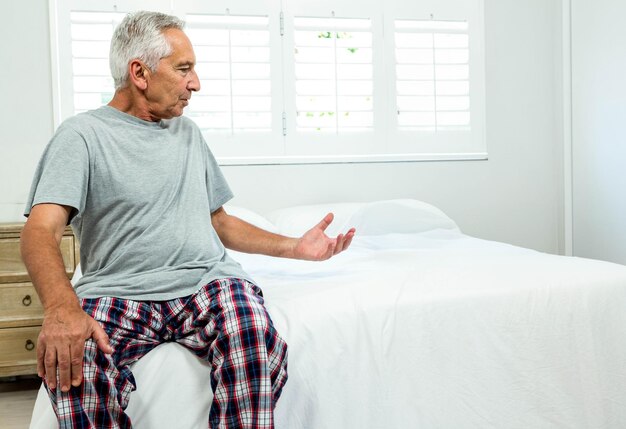Mastering the Challenge of Urinary Incontinence: Practical Approaches to Regain Control
Urinary incontinence can affect anyone and often brings with it frustration and embarrassment. Yet, it's a common issue that many people face, and effective strategies exist to manage and even stop it. If you're ready to master the challenge of urinary incontinence, this guide will walk you through several practical and empowering approaches to regain control over this aspect of your life.
Understanding Urinary Incontinence
What Is Urinary Incontinence?
Urinary incontinence refers to the involuntary loss of urine, varying from occasional leaks when you sneeze or cough to strong, sudden urges that don't leave enough time to reach a bathroom. Understanding different types of incontinence can clarify what might be happening and why.
Types of Urinary Incontinence
Stress Incontinence: Often caused by physical movements or activities, like sneezing or lifting heavy objects, which put pressure on the bladder.
Urge Incontinence: Characterized by a sudden, intense urge to urinate followed by an involuntary loss of urine, often associated with frequent urination.
Overflow Incontinence: Occurs when the bladder doesn't empty completely, leading to dribbling.
Functional Incontinence: Caused by physical or mental impairment that prevents timely bathroom visits.
Mixed Incontinence: A combination of different types, most commonly stress and urge incontinence.
Holistic Lifestyle Adjustments
Diet and Nutrition
What you drink and eat plays a significant role in bladder health. Consider these dietary adjustments:
Limit Caffeine and Alcohol: Both are diuretics and can increase urinary production.
Stay Hydrated: Drinking enough water is crucial—even if it seems counterintuitive. Dehydration can concentrate urine, irritating the bladder.
Avoid Bladder Irritants: Certain foods like spicy dishes, citrus fruits, and artificial sweeteners can exacerbate incontinence.
Weight Management
Excess weight can put additional pressure on the bladder and surrounding muscles, worsening incontinence. Maintaining a healthy weight through balanced diet and exercise can reduce this pressure.
Bladder Training
Training your bladder can help establish a regular urination schedule:
Scheduled Toilet Visits: Set intervals for bathroom visits—starting with short times and gradually stretching them as control improves.
Delayed Urination: Gradually increase the intervals between urges and actual trips to the bathroom to stretch bladder capacity.
Pelvic Floor Exercises
Strengthening the Pelvic Floor
Kegel exercises can help strengthen the pelvic floor muscles, which support bladder control. Here's how to do them effectively:
Identify the correct muscles by stopping urine flow midstream.
Once identified, regularly practice contracting and relaxing these muscles several times a day.
Aim for at least 3 sets of 10 repetitions daily.
Medical and Non-Medical Treatments
Devices and Products
Various products can assist in managing symptoms:
Absorbent Products: Pads and adult diapers provide a discreet way to handle leaks.
Pessaries: For women, these devices help support the bladder and reduce leaks.
Medications and Therapies
While this guide doesn't provide medical advice, it's worth knowing several treatments exist that specialists might discuss:
Medications: These might help relax bladder muscles or tighten the urethra.
Botox Injections: Used to calm overactive bladder muscle.
Nerve Stimulation: Electrical impulses can strengthen the pelvic floor.
Surgical Options
In severe cases, doctors may discuss surgery. Procedures range from minimally invasive sling surgeries to more comprehensive reconstructive surgeries. Consulting with a healthcare professional is crucial for understanding risks and benefits.
Psychological and Social Considerations
Emotional Support
Dealing with incontinence can affect mental health. Seeking support from friends, family, or professionals can provide relief.
Support Groups
Joining a support group offers ongoing encouragement and coping strategies, sharing experiences with others facing similar challenges.
Creating a Bladder-Friendly Environment
Set up spaces that reduce stress and allow swift access to bathrooms. Consider these tweaks:
Easy Bathroom Access: Make sure paths to bathrooms are unobstructed.
Adaptive Clothing: Clothing with easy-open fastenings can help manage urgent situations more effectively.
Looking Forward
Addressing urinary incontinence involves many steps and may require some trial and error. Patience is key. As you try different strategies, you'll likely discover an effective combination that works for you. Understand that improvement often takes time and persistence but is certainly within reach.
Quick Tips for Tackling Urinary Incontinence
- 🥤 Hydrate Wisely: Balance fluid intake; avoid caffeine and alcohol.
- 💪 Strengthen: Regularly perform Kegel exercises to bolster the pelvic floor.
- 🏃♂️ Stay Active: Incorporate exercise and maintain a healthy weight.
- ⏰ Bladder Train: Implement a urination schedule to stretch bladder intervals.
- 💡 Use Tools: Consider absorbent products or devices like pessaries.
- 👥 Seek Support: Connect with support groups for shared experiences.
- ⚠️ Consult Professionals: Discuss potential medical treatments or surgeries with healthcare providers.
With determination and the right approach, managing urinary incontinence becomes not just a possibility, but a reality. 🌈

Related Articles
- Are Incontinence Supplies Tax Deductible
- Can a Bladder Infection Cause Urinary Incontinence
- Can a Kidney Stone Cause Incontinence
- Can a Urinary Tract Infection Cause Incontinence
- Can a Uti Cause Incontinence
- Can Constipation Cause Incontinence
- Can Dairy Cause Incontinence
- Can Hemorrhoids Cause Bowel Incontinence
- Can Hemorrhoids Cause Incontinence
- Can Incontinence Be Cured